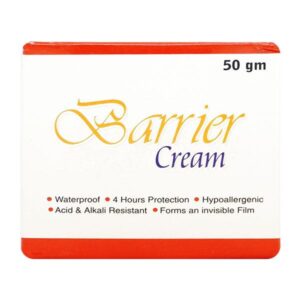KETOCONAZOLE + TRICLOSAN + ALOE VERA
Ketoconazole: Ketoconazole is an antifungal medication used to treat fungal infections. It is available in various forms, including tablets, creams, shampoos, and foams.
The primary mechanism of action of ketoconazole is to inhibit the synthesis of ergosterol, a vital component of the fungal cell membrane. Without ergosterol, the fungal cell membrane becomes weakened and more susceptible to damage, ultimately leading to the death of the fungus.
For systemic fungal infections such as candidiasis or histoplasmosis, oral ketoconazole tablets are commonly used. The usual adult dose ranges from 200-400 mg once daily, depending on the severity of the infection. It is important to follow the prescribed dosage and complete the full course of treatment.
Topical forms of ketoconazole, such as creams or shampoos, are primarily used to treat fungal infections of the skin, nails, or scalp. The frequency of application and duration of treatment may vary depending on the specific condition and severity.
Common side effects of ketoconazole include gastrointestinal symptoms such as nausea, vomiting, and abdominal pain. It may also cause dizziness, headache, skin rash, or itching. In rare cases, it can lead to severe allergic reactions or liver toxicity. If any unusual or severe side effects occur, it is important to seek medical attention immediately.
Ketoconazole interacts with several medications, so it is essential to inform your healthcare provider about any other drugs you are taking to avoid potential drug interactions.
Please note that this is a general overview of ketoconazole, and specific dosages, formulations, and side effects may vary. It is important to consult with a healthcare professional for personalized advice and recommendations.
Triclosan: Triclosan is an antimicrobial agent that is commonly used in personal care products such as soaps, toothpaste, and hand sanitizers. It is also used in some textiles and plastics.
The main purpose of triclosan is to inhibit the growth of bacteria and fungi. It achieves this by targeting an enzyme called enoyl-acyl carrier protein reductase (ENR) that is essential for fatty acid synthesis in bacteria. By inhibiting this enzyme, triclosan disrupts the bacterial cell membrane and inhibits their growth and reproduction.
Triclosan is typically used in a concentration of 0.1% to 0.3% in consumer products. It should be noted that triclosan is regulated in some countries due to concerns about its potential impact on the environment and the development of antibiotic resistance.
While triclosan is generally considered safe for use, there have been some concerns about its potential side effects. Studies have suggested that long-term exposure to high concentrations of triclosan may disrupt hormone function and contribute to the development of antibiotic-resistant bacteria. Additionally, triclosan has been associated with skin irritation and allergic reactions in some individuals.
It is important to note that the U.S. Food and Drug Administration (FDA) has banned the use of triclosan in over-the-counter hand sanitizers and soaps due to a lack of evidence demonstrating its safety and effectiveness. However, triclosan is still commonly used in other personal care products.
Aloe Vera: Aloe vera is a succulent plant commonly used for its medicinal properties. It is primarily grown in tropical regions and has been used for centuries in various traditional healing practices. Aloe vera is also available in the form of gel, extracts, and supplements.
The main use of aloe vera is for skin conditions such as sunburn, wounds, and burns. It has natural anti-inflammatory and soothing properties that can help reduce pain and promote healing. Aloe vera gel is applied topically to the affected area several times a day. It is important to note that aloe vera is not a substitute for medical treatment and should be used in conjunction with appropriate medical care.
The mechanism of action of aloe vera is complex and not fully understood. It contains various bioactive compounds, including vitamins, minerals, enzymes, and polysaccharides, which contribute to its therapeutic effects. The gel forms a protective barrier over the skin, which helps retain moisture and promote healing. It also has antioxidant properties that can help reduce inflammation and oxidative stress.
The dosage of aloe vera can vary depending on the form and concentration. For topical use, aloe vera gel can be applied 2-3 times a day on the affected area. It is important to follow the instructions provided on the product packaging and consult with a healthcare professional if unsure about the appropriate dosage.
While aloe vera is generally considered safe for topical use, some individuals may experience mild side effects. These can include skin irritation, redness, itching, or a rash. In rare cases, individuals may be allergic to aloe vera, which can lead to more severe reactions. It is recommended to do a patch test before using aloe vera for the first time to check for any adverse reactions.
Furthermore, aloe vera is not meant to be ingested without proper supervision. Oral use of aloe vera may have potential risks and can cause diarrhea or other digestive discomforts. It can also interact with certain medications, such as blood thinners and diabetes medications. It is always advisable to consult with a healthcare professional before using aloe vera internally.
In conclusion, aloe vera is a popular natural remedy for various skin conditions due to its anti-inflammatory and healing properties. It is primarily used topically, and when used correctly, it can provide relief from sunburns, wounds, and other skin irritations. However, individuals should be aware of potential side effects and interactions and should consult with a healthcare professional before using aloe vera internally.

